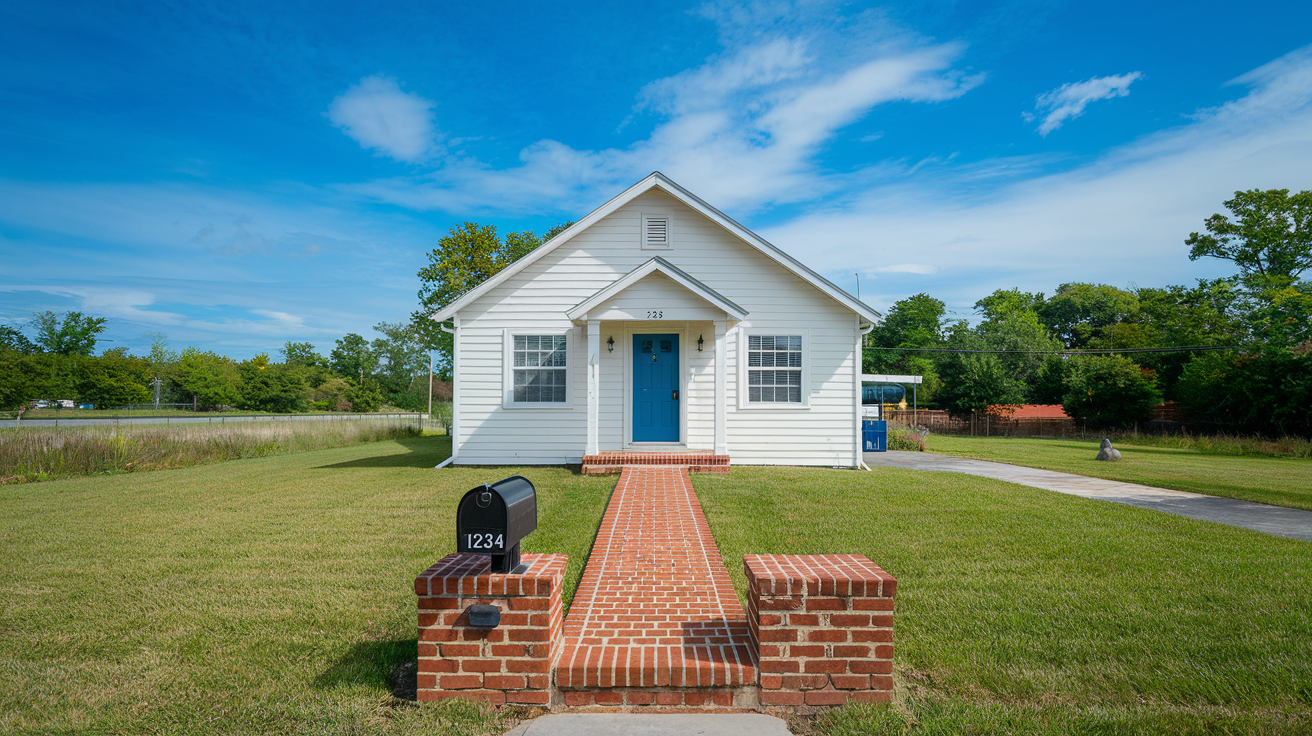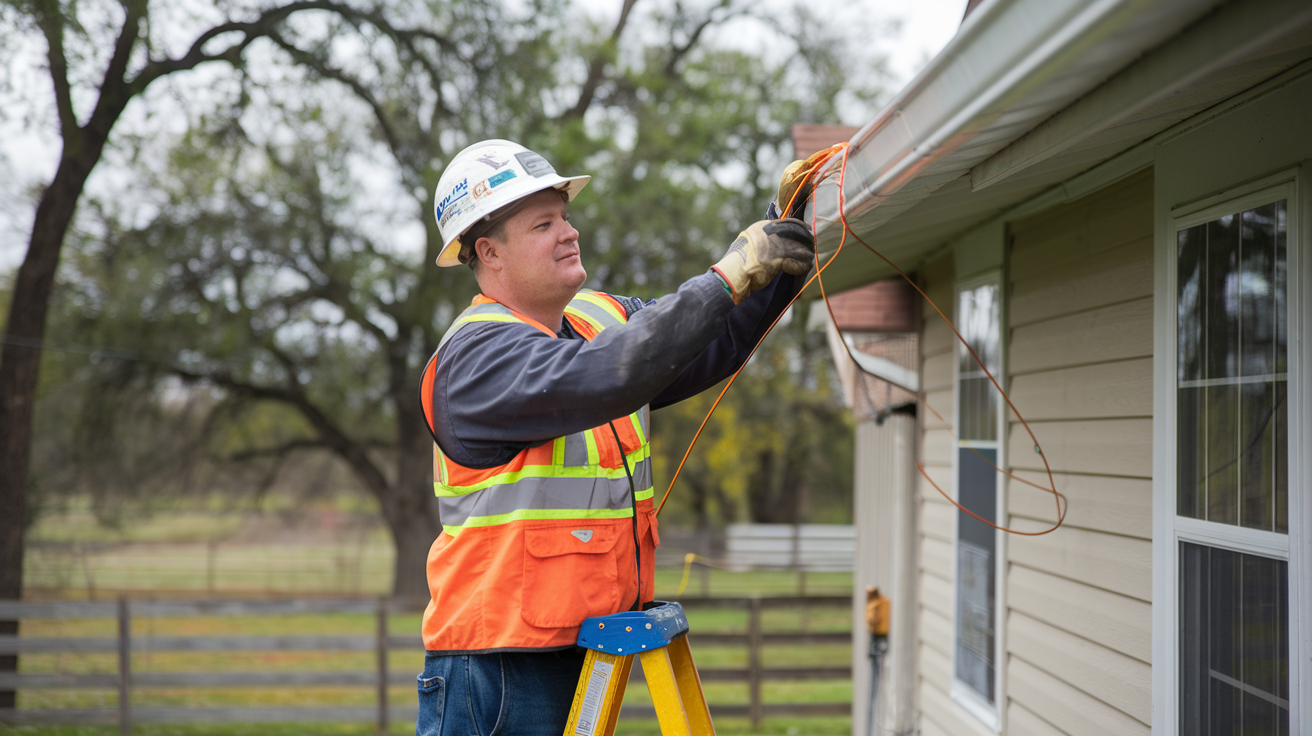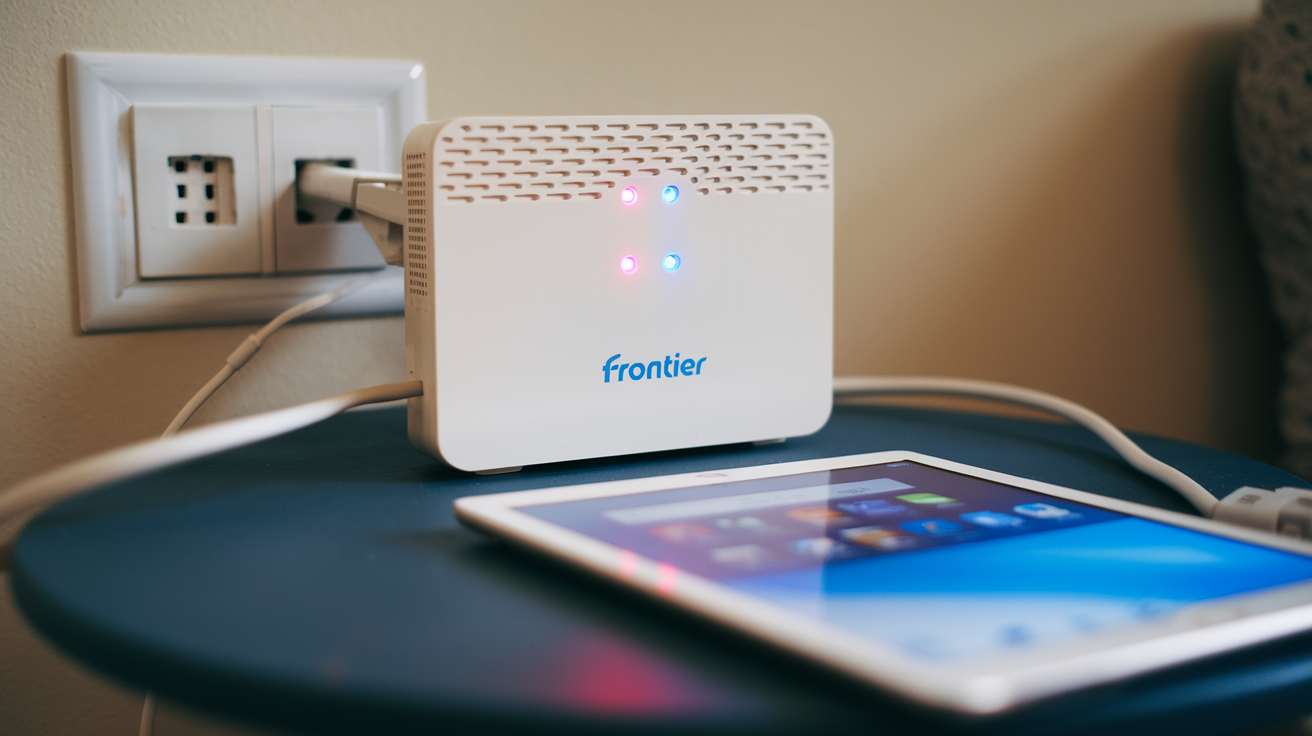
Discovering Frontier Internet availability in your home is straightforward. This guide provides a clear, step-by-step process to check if Frontier's high-speed internet services are accessible in your specific location, ensuring you can make an informed decision for your connectivity needs.
Checking Frontier Internet Availability: Your Comprehensive Guide
In today's digitally driven world, reliable internet access is no longer a luxury; it's a necessity. Whether you're working from home, streaming your favorite shows, or keeping in touch with loved ones, a stable internet connection is paramount. Frontier Communications is a prominent internet service provider (ISP) known for its presence in various regions, particularly in rural and suburban areas where other providers might be less prevalent. However, their service footprint is not universal. This comprehensive guide is designed to equip you with all the necessary knowledge and actionable steps to definitively determine if Frontier Internet is available at your specific address. We'll delve into the most effective methods, explore the factors that influence availability, and provide insights into what to expect once you confirm service is an option for you.
Understanding Frontier Internet Services
Before diving into the availability check, it's beneficial to understand what Frontier Communications typically offers. Frontier is known for providing a range of internet services, often leveraging different technologies depending on the infrastructure in a given area. Their primary offerings often include:
- Fiber Optic Internet: This is Frontier's most advanced and sought-after service, offering incredibly high speeds, low latency, and superior reliability. Fiber-to-the-home (FTTH) technology transmits data using light signals through glass or plastic fibers, making it exceptionally fast and capable of supporting multiple devices and bandwidth-intensive activities simultaneously.
- DSL (Digital Subscriber Line) Internet: For areas where fiber infrastructure is not yet established, Frontier often provides DSL internet. This technology uses existing copper telephone lines to transmit data. While generally slower than fiber, DSL can still offer a significant upgrade over dial-up and can be a viable option for basic internet needs like browsing, email, and standard-definition streaming.
- Bundled Services: Frontier may also offer bundles that include internet, TV, and phone services, which can sometimes provide cost savings.
The type of service available at your address will directly impact the speeds and performance you can expect. Understanding these options helps set expectations during your availability check.
Methods to Check Frontier Internet Availability
Determining Frontier Internet availability requires a direct approach. Fortunately, ISPs like Frontier make this process relatively straightforward for consumers. There are two primary, highly effective methods to ascertain service availability at your location:
- The most efficient method: Utilizing Frontier's official online availability checker.
- The direct communication method: Contacting Frontier's customer service or sales department via phone.
Each method has its own advantages, and sometimes using both can provide added confidence in the results. We will explore each of these in detail.
Using Frontier's Online Availability Checker
Frontier Communications, like most major ISPs, provides a dedicated tool on its official website designed to check service availability by address. This is typically the quickest and most convenient way to get an answer.
Step-by-Step Guide to Using the Online Checker:
- Navigate to the Frontier Website: Open your web browser and go to the official Frontier Communications website (e.g., www.frontier.com).
- Locate the Availability Tool: Look for a prominent section on the homepage or within the "Internet" or "Shop" sections that prompts you to "Check Availability," "See Plans," or "Enter Your Address." This is usually a search bar or a dedicated input field.
- Enter Your Full Address: You will be asked to input your complete street address, including street number, street name, city, state, and ZIP code. Ensure accuracy to avoid incorrect results. Some tools might also ask for your apartment or unit number if applicable.
- Submit Your Information: Click the "Check," "Submit," or similar button.
- Review the Results: The system will then query its database to see if Frontier services are available at the address you provided.
- If Available: The website will typically display the types of internet services (e.g., Fiber, DSL) available, along with available speed tiers and potentially promotional offers or plans. You may be able to proceed to select a plan and initiate the signup process directly online.
- If Not Available: The tool will clearly state that Frontier services are not currently available at your address. It might also provide information on why, or if there are any plans for future expansion in the area.
Tips for Using the Online Checker:
- Be Precise with Your Address: Even minor typos can lead to inaccurate results. Double-check every detail.
- Check for Variations: If you live in a multi-unit dwelling, try entering the main building address and then looking for an option to specify your unit.
- Note Down the Information: If service is available, make a note of the available speeds, plan details, and any special offers presented.
- Clear Your Browser Cache: Occasionally, outdated website data can cause issues. Clearing your browser's cache and cookies can help ensure you're seeing the most current information.
The online checker is powered by Frontier's internal network data and mapping systems, making it the most authoritative source for real-time availability information. As of 2025, this remains the primary and most efficient method for consumers.
Contacting Frontier Customer Service
If you prefer direct interaction, encounter issues with the online tool, or want to discuss your options with a representative, calling Frontier's customer service is an excellent alternative.
How to Contact Frontier Support:
- Find the Correct Phone Number: Visit the Frontier website and look for the "Contact Us" or "Support" section. They will typically list a dedicated number for sales inquiries or new service requests. Alternatively, a quick search for "Frontier Communications customer service number" will yield the appropriate contact information. For 2025, the general sales/availability number is often prominently displayed.
- Prepare Your Information: Have your full address ready, including any apartment or unit numbers. You might also want to have your current internet provider information handy if you're considering switching.
- Speak to a Representative: When you call, clearly state that you want to check for internet service availability at your address.
- Provide Your Address: The representative will ask for your complete address. They will then use their internal systems to check for serviceability.
- Discuss Available Options: If service is available, the representative can explain the different internet plans, speeds, pricing, and any current promotions. They can also answer specific questions you might have about installation, equipment, and contract terms.
- If Not Available: If Frontier services are not available, the representative may be able to provide information on potential future expansion or recommend alternative solutions if they have them.
Benefits of Calling:
- Personalized Assistance: You can ask specific questions and get tailored advice.
- Clarification of Details: Representatives can help clarify complex plan details or installation procedures.
- Potential for Special Offers: Sometimes, phone representatives may have access to exclusive deals not advertised online.
- Direct Feedback: If there are issues or nuances with your address, a person can often navigate them more effectively than an automated system.
While the online tool is fast, speaking with a representative can offer a more in-depth understanding and personalized service, especially if you have unique circumstances regarding your address or service needs.
Exploring Alternative and Indirect Methods
While the direct methods are the most reliable, there are a few indirect ways to get an idea of Frontier's potential presence in your area, especially if you're in the early stages of research.
Checking with Neighbors:
If you have neighbors who have lived in the area for a while, they might know if Frontier services are available or have been in the past. This is anecdotal but can sometimes provide a quick hint.
Observing Infrastructure:
In some cases, you might see Frontier-branded equipment, such as fiber optic cables being laid or DSL connection boxes on utility poles, which can indicate active or planned service. However, this is not a definitive confirmation.
Third-Party Comparison Websites:
Various third-party websites aggregate ISP availability information. While these can be helpful for comparing providers, always cross-reference their information with Frontier's official checker or customer service for the most accurate and up-to-date results. These sites often rely on data that may not be as real-time as the ISP's own systems.
These indirect methods should be considered supplementary and not replacements for the direct checks. They are best used for initial exploration before committing to a formal inquiry.
Factors Influencing Frontier Internet Availability
Why is Frontier Internet available in one neighborhood but not the next? Several key factors determine where an ISP can offer its services. Understanding these can provide context:
Infrastructure Development:
This is the most significant factor. Frontier's ability to provide service hinges on the physical network infrastructure present in your area. For fiber optic internet, this means the presence of fiber optic cables running to your street or even directly to your home. For DSL, it requires active, functioning copper telephone lines managed by Frontier or a partner network.
Geographic Location:
Frontier's service areas are geographically defined. They have specific regions where they have invested in network build-out. This often includes states where they acquired existing networks from other companies, such as Verizon's former landline and DSL operations in certain states. Rural and suburban areas are often a focus, but availability within these regions can still be patchy.
Network Capacity and Investment:
Even if basic infrastructure exists, Frontier needs to have sufficient network capacity and have made the investment to serve a particular address. Building out new lines, upgrading existing ones, and maintaining the network require significant capital. ISPs prioritize areas where they anticipate a good return on investment.
Regulatory and Permitting Processes:
Deploying new infrastructure, especially fiber optics, often involves navigating complex local regulations, obtaining permits, and dealing with right-of-way issues. These processes can significantly impact the speed and feasibility of expansion.
Competition:
In highly competitive markets with multiple ISPs offering robust services, Frontier might choose to focus its expansion efforts elsewhere. Conversely, in areas with limited options, they may see an opportunity to establish a presence.
Demand:
While ISPs invest in infrastructure, the potential demand from residents in an area also plays a role in their decision-making for expansion projects.
These factors explain why a simple address check is crucial, as availability is highly localized and dependent on specific network conditions.
Understanding Internet Technologies and Their Availability
The type of internet technology available at your address dictates the speeds and performance you can expect. Frontier utilizes different technologies, and their availability varies significantly.
Fiber Optic Internet (FTTH):
Description: Fiber optic internet uses thin strands of glass or plastic to transmit data as light pulses. This is the gold standard for internet connectivity, offering symmetrical download and upload speeds, ultra-low latency, and immunity to electromagnetic interference.
Availability: Fiber deployment is expensive and time-consuming. Frontier is actively expanding its fiber network, but it's typically concentrated in specific, newer developments or areas where they have made significant infrastructure investments. If fiber is available, it's usually advertised with very high speed tiers (e.g., 500 Mbps, 1 Gbps, or even higher).
Check for: Speeds in the hundreds or thousands of Mbps (e.g., 300 Mbps, 500 Mbps, 1 Gig).
DSL Internet:
Description: DSL (Digital Subscriber Line) internet transmits data over existing copper telephone lines. It offers a significant improvement over dial-up and is generally more widely available than fiber, especially in older neighborhoods or rural areas where fiber hasn't been installed.
Availability: Frontier offers DSL in many areas where fiber is not yet present. The speeds depend heavily on the distance from the local telephone exchange (central office) to your home. The farther away you are, the slower the speeds will be.
Check for: Speeds typically ranging from 5 Mbps to 100 Mbps, with lower speeds being more common in areas farther from the exchange.
Fixed Wireless Internet:
While less common for Frontier compared to fiber and DSL, some providers offer fixed wireless as an alternative in certain rural areas. This involves a line-of-sight connection from a tower to an antenna on your home. Availability is highly location-specific and dependent on tower placement and signal strength.
When you check availability, the results will specify which of these technologies, if any, are offered at your address, along with the associated speed options.
Fiber vs. DSL: What Frontier Offers
Understanding the difference between Fiber and DSL is crucial when evaluating Frontier's offerings. Here's a simplified comparison:
| Feature | Frontier Fiber Optic | Frontier DSL |
|---|---|---|
| Technology | Fiber optic cables | Copper telephone lines |
| Speed (Typical Download) | 100 Mbps - 2 Gbps+ | 5 Mbps - 100 Mbps |
| Speed (Typical Upload) | Symmetrical (same as download) up to 2 Gbps+ | Significantly slower than download (e.g., 1 Mbps - 10 Mbps) |
| Latency | Very Low | Moderate to High |
| Reliability | High, less susceptible to interference | Moderate, can be affected by distance and line quality |
| Availability | Limited, expanding | Wider, especially in established areas |
| Best For | Heavy streaming, gaming, multiple users, large file transfers, WFH | Basic browsing, email, light streaming, single user |
2025 Statistics & Trends: Frontier continues to prioritize fiber expansion, recognizing its superior performance and customer satisfaction. By 2025, a significant portion of their new deployments and upgrades focus on bringing multi-gigabit fiber speeds to more communities. However, DSL remains a vital service for many, particularly in areas where fiber infrastructure is still under development. The average advertised DSL speeds might see incremental improvements due to technology advancements, but the fundamental difference in speed and performance compared to fiber remains substantial.
When checking availability, note which technology is offered. If both are available, fiber will almost always be the superior choice if your budget and needs align.
What to Expect After Confirming Availability
Once you've confirmed that Frontier Internet is available at your address and you've chosen a plan, the next step is installation. Here's a general overview of what to expect:
Scheduling an Appointment:
You'll typically schedule an installation appointment when you sign up for service, either online or over the phone. Installation windows are usually provided, and Frontier will confirm the exact date and time.
Installation Process:
- Technician Visit: A certified Frontier technician will visit your home on the scheduled date.
- Equipment Setup: The technician will install any necessary equipment, such as a modem or router (or a combination unit). For fiber installations, this may involve running a new cable from the street to your home and installing an Optical Network Terminal (ONT). For DSL, they will connect to the existing phone line.
- Testing: The technician will test the connection to ensure it's working correctly and meeting the advertised speeds for your plan.
- Home Wiring: They will ensure the equipment is placed in a suitable location and connected properly. You may have the option to have them run cables discreetly, though this might incur additional charges depending on the complexity.
- Guidance: The technician can often provide basic guidance on using your new service and equipment.
Installation Fees:
Be aware that installation fees can apply. These are sometimes waived as part of promotional offers, so always clarify this during the signup process. As of 2025, installation fees can range from $0 to $99 or more, depending on the promotion and the complexity of the installation.
Equipment:
Frontier typically provides a modem/router. You may have the option to rent this equipment or purchase your own compatible device, which can sometimes save on monthly fees. Ensure any purchased equipment meets Frontier's specifications.
Service Activation:
Once the installation is complete, your service should be active. You'll receive information on how to set up your Wi-Fi network and access your online account for billing and support.
It's always a good idea to have someone available at home during the installation window and to be prepared to discuss placement options for the equipment with the technician.
Troubleshooting Common Availability Issues
Sometimes, even after checking, you might encounter issues or have questions regarding availability. Here are common scenarios and how to address them:
Address Not Found or Incorrectly Listed:
Issue: The online checker doesn't recognize your address, or it shows availability for a nearby address but not yours.
Solution:
- Verify Accuracy: Double-check your address for any typos, incorrect street names, or missing apartment numbers.
- Use Standard Formats: Try entering your address in different standard formats (e.g., "Street" vs. "St.", "Avenue" vs. "Ave.").
- Try a Nearby Address: If possible, try checking a neighbor's address or the address of a nearby landmark. This can give you an idea if service is generally in the area.
- Call Customer Service: This is the most crucial step. A representative can manually look up your address in their system, which might be more detailed than the online tool. They can also investigate discrepancies.
- New Construction: If your home is newly built, the address might not yet be updated in all databases. Frontier may need to survey the location to determine feasibility.
Service Listed as "Coming Soon" or "Future Expansion":
Issue: The checker indicates that Frontier plans to offer service in your area in the future but it's not available now.
Solution:
- Sign Up for Notifications: Many ISPs allow you to sign up for email alerts when service becomes available in your area.
- Monitor Frontier's Expansion Plans: Keep an eye on Frontier's official website or news releases for updates on their network expansion projects.
- Contact Frontier Periodically: You can call customer service every few months to inquire about the status of expansion in your specific area.
- Consider Alternatives: While waiting, explore other available internet providers in your area.
Only DSL Available, Not Fiber:
Issue: You can get Frontier DSL, but you were hoping for their faster fiber optic service.
Solution:
- Understand the Difference: As detailed earlier, DSL speeds are significantly lower than fiber. If your internet needs are basic, DSL might suffice.
- Check Other Providers: Even if Frontier only offers DSL, another provider might offer fiber or cable internet in your area. Use comparison tools and Frontier's checker to see all your options.
- Wait for Fiber Expansion: Frontier is continuously expanding its fiber network. Your area might be a candidate for future upgrades.
Inaccurate Speed Information:
Issue: You confirmed availability, but the speeds listed seem too low for what you expect from the technology (e.g., very low DSL speeds).
Solution:
- Distance Matters for DSL: DSL speeds are highly dependent on your distance from the telephone company's central office. If you are far away, speeds will be lower.
- Check Plan Details Carefully: Ensure you are looking at the advertised *maximum* speeds, not guaranteed speeds.
- Consult a Representative: Discuss your speed expectations with a Frontier representative. They can provide more context about what speeds are realistically achievable at your address.
Troubleshooting availability issues often requires persistence and clear communication with the ISP. Don't hesitate to escalate your query if you believe there's an error in their system.
Making the Right Choice for Your Home Internet
Navigating the process of finding out if Frontier Internet is available in your area is a critical first step towards securing reliable and fast connectivity. By utilizing Frontier's official online availability checker and supplementing with direct calls to customer service, you can obtain the most accurate and up-to-date information regarding service options at your specific address. Remember that factors like existing infrastructure, geographic location, and ongoing network investments by Frontier all play a significant role in determining availability. Understanding the differences between technologies like Fiber and DSL is also essential, as it directly impacts the performance and capabilities of the service you receive. If Frontier isn't available, or if their offerings don't meet your needs, this guide also empowers you to explore other avenues and troubleshoot potential issues. Ultimately, a thorough check ensures you can make an informed decision that best suits your household's internet requirements, paving the way for seamless online experiences.






